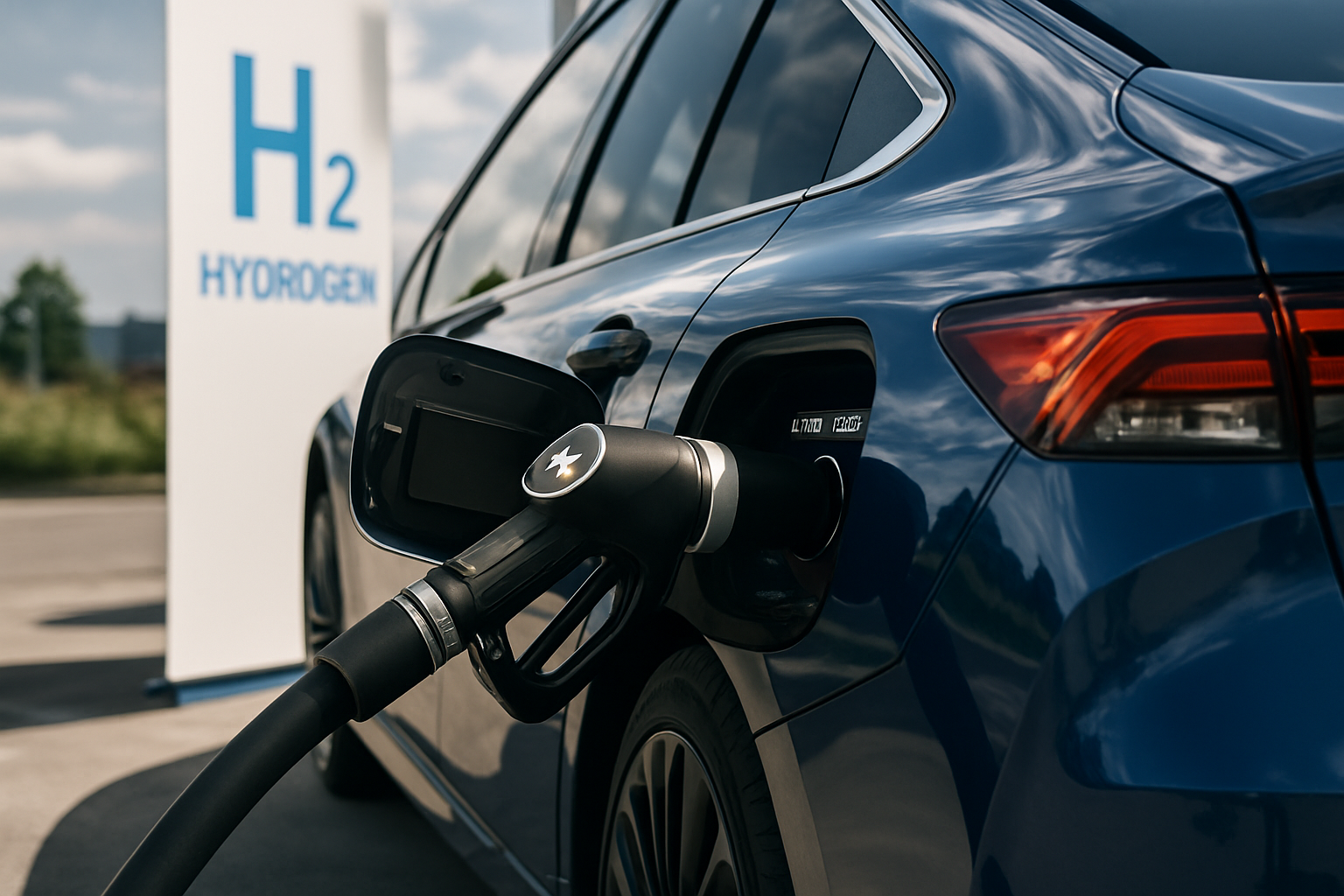Hydrogen Fuel Cell Vehicles: The Quiet Revolution in Automotive Propulsion
In the ever-evolving landscape of automotive technology, a silent contender is steadily gaining ground. Hydrogen fuel cell vehicles (FCVs) are emerging as a promising alternative to traditional combustion engines, offering a unique blend of zero-emission driving and long-range capabilities. This cutting-edge technology harnesses the power of hydrogen to generate electricity, propelling vehicles forward with nothing but water vapor as a byproduct. As the automotive industry grapples with environmental concerns and the search for sustainable mobility solutions, hydrogen fuel cells are poised to play a significant role in shaping the future of transportation.

A Brief History of Fuel Cell Technology
The concept of fuel cells dates back to 1838 when Welsh physicist William Grove first demonstrated the technology. However, it wasn’t until the 1960s that NASA began using fuel cells in space missions, providing both power and drinking water for astronauts. The automotive industry started exploring fuel cell technology in earnest during the 1990s, with several major manufacturers investing in research and development. Toyota’s Mirai, launched in 2014, marked a significant milestone as the first mass-produced hydrogen fuel cell vehicle available to consumers.
Advantages of Hydrogen Fuel Cell Vehicles
Hydrogen fuel cell vehicles offer several compelling advantages over both traditional internal combustion engines and battery electric vehicles. Perhaps the most significant benefit is the rapid refueling time, typically taking just 3-5 minutes to fill a hydrogen tank – comparable to refueling a gasoline-powered car. This quick turnaround addresses one of the primary concerns associated with battery electric vehicles: long charging times. Additionally, FCVs boast impressive range capabilities, with some models able to travel over 400 miles on a single tank of hydrogen.
Infrastructure Challenges and Development
Despite the promising technology, widespread adoption of hydrogen fuel cell vehicles faces a significant hurdle: lack of infrastructure. As of 2021, there were only about 550 hydrogen fueling stations worldwide, with the majority concentrated in Japan, South Korea, and California. However, governments and private companies are increasingly investing in hydrogen infrastructure. For instance, Germany plans to have 400 hydrogen stations by 2023, while China aims to have 1,000 stations operational by 2030. As infrastructure expands, it’s likely to drive increased adoption of FCVs.
Environmental Impact and Sustainability
While hydrogen fuel cell vehicles produce zero tailpipe emissions, the environmental impact of hydrogen production must be considered. Currently, most hydrogen is produced through steam methane reforming, a process that relies on natural gas and produces carbon dioxide as a byproduct. However, there’s growing interest in green hydrogen production methods, such as electrolysis powered by renewable energy sources like wind or solar. As these sustainable production methods become more prevalent, the overall environmental footprint of hydrogen fuel cell vehicles will continue to improve.
Technological Advancements in Fuel Cell Design
Recent years have seen significant advancements in fuel cell technology, addressing earlier concerns about efficiency, durability, and cost. Modern fuel cell stacks are more compact, powerful, and resistant to degradation than their predecessors. Innovations in catalyst materials have reduced the reliance on expensive platinum, helping to drive down production costs. Additionally, improvements in hydrogen storage technology, such as high-pressure carbon fiber tanks, have increased the range and safety of fuel cell vehicles.
The Role of FCVs in Commercial Transportation
While much attention has been focused on passenger vehicles, hydrogen fuel cell technology is finding particularly promising applications in the commercial transportation sector. Long-haul trucks, buses, and even trains are being developed with fuel cell powertrains, leveraging the technology’s long-range capabilities and quick refueling times. These attributes make FCVs well-suited for heavy-duty applications where battery electric vehicles may face limitations due to weight and charging time constraints.
Collaboration and Industry Partnerships
The development of hydrogen fuel cell technology has spurred unprecedented collaboration within the automotive industry. Recognizing the significant investment required to bring this technology to market, many manufacturers have formed strategic partnerships to share costs and expertise. For example, BMW and Toyota have joined forces to co-develop fuel cell systems, while Hyundai is working with Audi to accelerate the technology’s advancement. These collaborations are helping to drive innovation and potentially accelerate the widespread adoption of fuel cell vehicles.
Future Outlook and Market Projections
As the technology matures and infrastructure expands, the market for hydrogen fuel cell vehicles is expected to grow significantly. Industry analysts project that by 2030, there could be several million FCVs on roads worldwide. This growth is likely to be driven by a combination of factors, including stricter emissions regulations, advancements in hydrogen production and storage technologies, and increasing consumer awareness of alternative fuel vehicles. While battery electric vehicles currently dominate the zero-emission vehicle market, hydrogen fuel cell technology is positioned to carve out a significant niche, particularly in segments where long range and quick refueling are critical.
In conclusion, hydrogen fuel cell vehicles represent a fascinating frontier in automotive technology. As the industry continues to innovate and overcome existing challenges, FCVs have the potential to play a crucial role in the transition to sustainable mobility. Their unique combination of zero-emission operation, long-range capabilities, and rapid refueling times makes them a compelling option for both personal and commercial transportation. While obstacles remain, the ongoing advancements in fuel cell technology and the expanding hydrogen infrastructure suggest a bright future for this quiet revolution in automotive propulsion.





